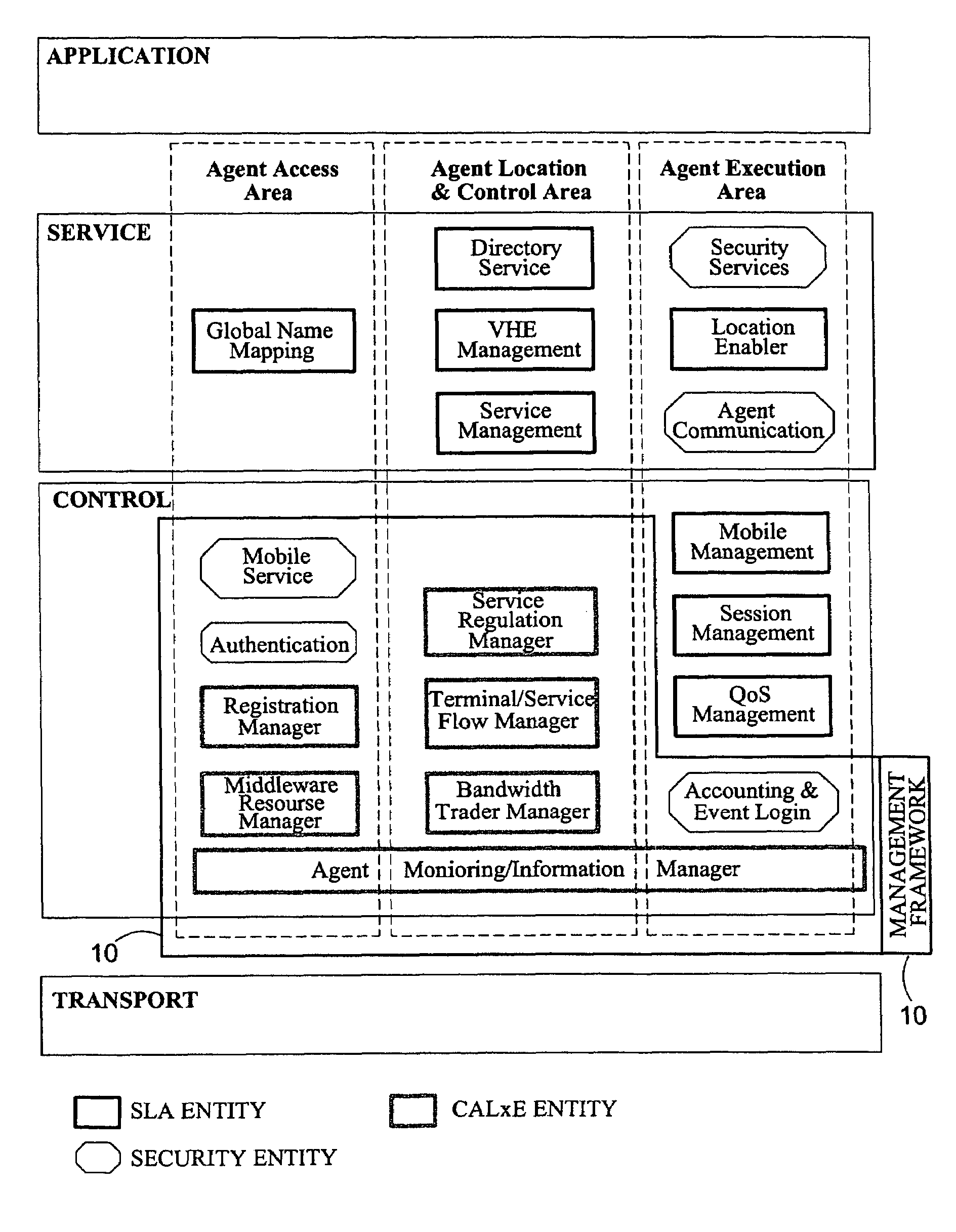Management and control of telecommunication services delivery
a technology of telecommunication services and control, applied in the direction of transmission, time interval measurement with driving mechanism, time interval measurement, etc., can solve the problems that service providers have traditionally been uncomfortable with operational scenarios, and achieve the effect of saving battery power, increasing the functionality available to users, and efficient execution of user related computations
- Summary
- Abstract
- Description
- Claims
- Application Information
AI Technical Summary
Benefits of technology
Problems solved by technology
Method used
Image
Examples
Embodiment Construction
[0027]The present invention is a framework or platform, which will be referred to as a service provision manager or controller, for allowing a user to access a plurality of different services. The platform provides an environment where users, service providers and network operators can interact in order to optimise the provision of services to the user. Management functionality is provided for establishing the dynamic relationships between the parties each time a communication session is initiated, so that the user can be provided with a personalised service across a wide range of network operators and service providers.
[0028]FIG. 2 shows the overall management framework structure 10, which has various control entities, and is operable to interact with various services and control functions. The management framework platform 10 is outlined in bold in FIG. 2. This structure is provided between the application layer, which includes a plurality of different services that may be provide...
PUM
 Login to View More
Login to View More Abstract
Description
Claims
Application Information
 Login to View More
Login to View More - R&D
- Intellectual Property
- Life Sciences
- Materials
- Tech Scout
- Unparalleled Data Quality
- Higher Quality Content
- 60% Fewer Hallucinations
Browse by: Latest US Patents, China's latest patents, Technical Efficacy Thesaurus, Application Domain, Technology Topic, Popular Technical Reports.
© 2025 PatSnap. All rights reserved.Legal|Privacy policy|Modern Slavery Act Transparency Statement|Sitemap|About US| Contact US: help@patsnap.com



